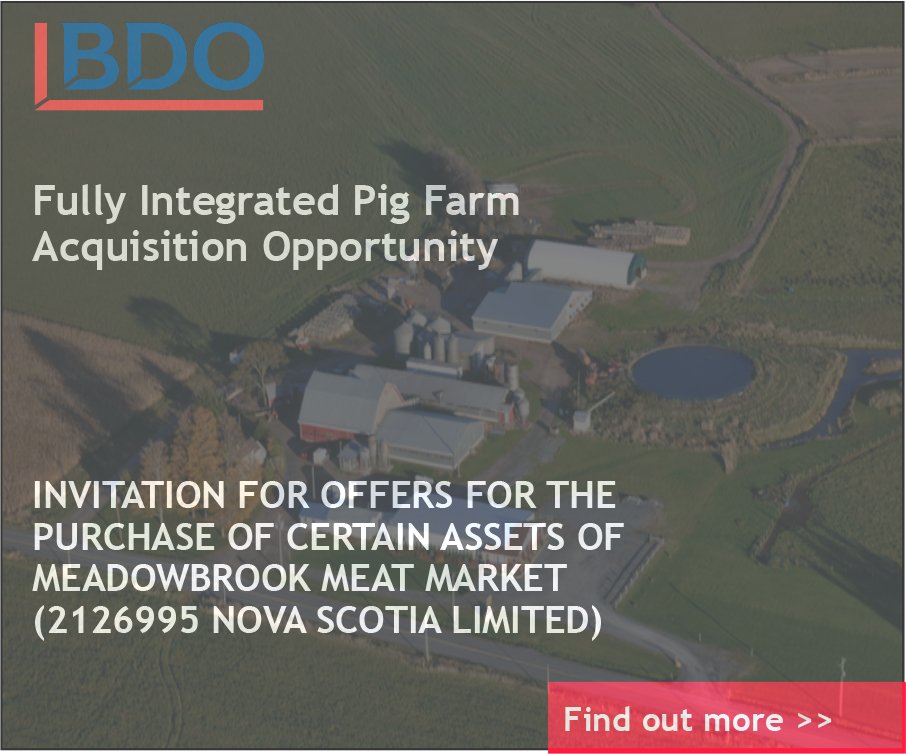Price increases dominate DFNS discussions
/by Dan Woolley
The Dairy Farmers of Nova Scotia (DFNS) annual general meeting was held on Dec. 1 and 2. The first day was a virtual meeting and the second day was an in-person meeting at the Inn on Prince Hotel and Conference Centre in Truro.
DFNS members were told that the Canadian Dairy Commission (CDC) would soon send out applications to dairy farmers to apply for the third year of compensation under the Dairy Direct Payment Program.
The federal government introduced the program in 2019 after it made market concessions under the CETA and CPTPP trade deals that Canada signed with the European Union and 10 other Pacific Rim countries respectively.
Compensation payments to dairy producers out of the $1.75-billion program began in the 2019-2020 fiscal year and will conclude at the end of the 2022-2023 fiscal year.
Chantal Paul, the CDC’s corporate services director, told DFNS members during the AGM that they would receive compensation applications in January, which must be submitted by March 31.
Paul said that 96 percent of producers nationally who registered for the program received compensation and 100 percent of Nova Scotia dairy farmers who applied were compensated.
The total national disbursements were $345 million in 2019-2020, $468 million in 2020-2021, and $469 million in 2021-2022. The projected total payment for 2022-2023 is $468 million.
According to Paul, during the last two years, milk producers’ cost of production (COP) increased by 13.42 percent, with feed costs alone increasing by 27 percent.
She noted that feed, fuel, and labour costs have driven the COP increase, adding that a CDC study indicated that only nine percent of producers recovered their COP.
Paul asserted that the CDC’s decision to increase the price paid to milk producers is “fully justified given the surge in the price of all inputs to produce milk.”
The CDC also approved a five percent increase in the processors’ margin and a 33 percent reduction in the marketplace levy that pays for butter storage, she said.
Paul said that the demand for butterfat increased by 3.9 percent, driven mainly by increased cheese production. However, she added that the increased production has slowed as milk imports have increased.
DFNS member Reginald Dillman said that the 8.4 percent increase in the price paid to milk producers is not enough. “There is an awful lot of pressure on-farm, and it is not justifiable,” he said.
Paul explained that the reason the returns to producers are not following the COP is because there’s no market for the SNF (solid-not-fat) component of milk.
Dillman countered that even with the milk price increase, only 25 percent of producers would recover their COP, declaring, “It is very unsettling. We all have to borrow from lenders.”
DFNS member Kim Waalderbos asked if the CDC should have issued a press release on the COP increase.
Paul suggested that the CDC would then have been criticized for not issuing a press release on the milk price increase, as opposed to announcing it on the CDC website on a Friday afternoon, which is what it did on Oct. 29.
“We can do a better job of communicating,” she admitted. “I think we will adjust our communications next year.”
Paul added, “It is not going to change our methodology of calculating the COP.” Greg Cox, the interim DFNS general manager, said part of the problem is a time lag in studying the COP before announcing any change in the milk price. “We try to compensate through indexation,” he said.
Speaking remotely, CDC chairman Bob Ingratta said, “The CDC really takes the price decision very seriously, taking the time to come up with a balanced decision.”
DFNS chairman Gerrit Damsteegt suggested that decisions on milk price increases should be taken more than once a year.
Speaking remotely, Dairy Farmers of Canada (DFC) president Pierre Lampron pledged that the DFC would hold the federal government to its commitment of $1.4 billion in compensation to dairy farmers for trade concessions made under the CUSMA trade deal with the U.S. and Mexico.
Lampron also promised that the DFC would seek a commitment from the federal government to concede no further trade access under any future agreements. “The pressure of imports has increased, particularly in light of CUSMA,” he said, adding that compensation will not replace lost market share.
According to Damsteegt, some 30 percent of Maritime milk is shipped out of the region to Ontario and Quebec for processing, but Agropur backed out of building a new processing plant in Sussex, N.B., because of CUSMA.
DFC CEO Jacques LeFebvre said that the federal government will never admit that it gave up sovereignty, while he argues that the U.S. has oversight over Canadian milk pricing.
Former DFNS chairman Havey Whidden questioned the feasibility of building a new regional processing plant “because of the phenomenal cost,” adding that “it is not something I expect will happen in the short term.”










